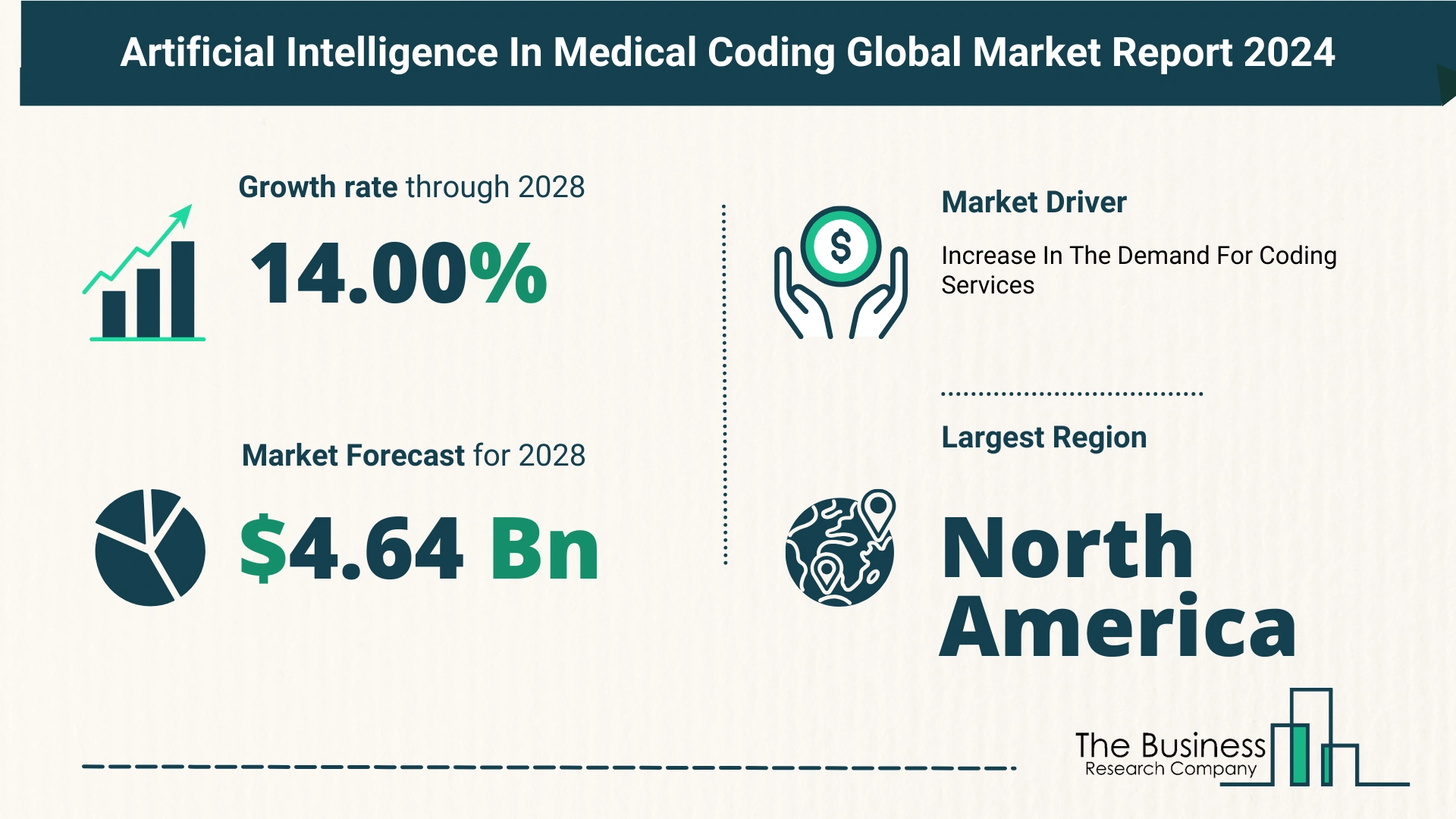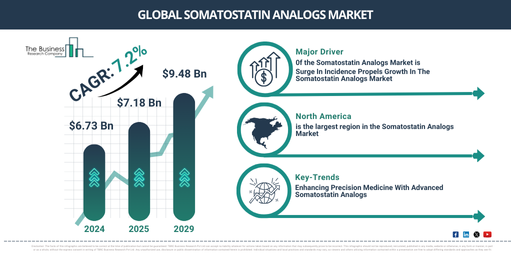Understand How The Artificial Intelligence In Medical Coding Market Is Poised To Grow Through 2024-2033
The Business Research Company’s global market reports are now updated with the latest market sizing information for the year 2024 and forecasted to 2033
As per The Business Research Company’s Artificial Intelligence In Medical Coding Global Market Report 2024, the artificial intelligence in medical coding market is expected to show significant growth in the forecast period.
The artificial intelligence (AI) in medical coding market is experiencing rapid growth, driven by a surge in healthcare data and the need for more efficient coding practices. This blog explores the current market landscape, key drivers, major trends, and future predictions.
Rapid Market Growth
- Current Market Size: The AI in medical coding market grew from $2.4 billion in 2023 to $2.74 billion in 2024.
- Growth Rate: This growth represents a compound annual growth rate (CAGR) of 14.3%.
- Future Projections: The market is expected to reach $4.64 billion by 2028, maintaining a CAGR of 14.0%.
Key Drivers of Growth
- Increasing Healthcare Data Volume:
- The massive influx of healthcare data necessitates more efficient and accurate coding.
- AI helps manage this data by automating and optimizing the coding process.
- Coding Accuracy and Efficiency:
- AI enhances the precision and speed of medical coding, reducing errors and improving patient care.
- AI systems can adapt to new coding standards and integrate seamlessly with electronic health records (EHRs).
- Regulatory Requirements:
- Stringent regulatory standards demand accurate coding for compliance.
- AI ensures adherence to these regulations, mitigating risks of non-compliance.
- Revenue Cycle Management Optimization:
- AI optimizes revenue cycle management by ensuring accurate billing and timely reimbursements.
- This optimization is crucial for the financial health of healthcare organizations.
- Integration with EHRs:
- AI systems integrate with EHRs to streamline coding and improve data interoperability.
- This integration facilitates better patient outcomes and more efficient healthcare delivery.
View More On The Artificial Intelligence In Medical Coding Market Report 2024 – https://www.thebusinessresearchcompany.com/report/artificial-intelligence-in-medical-coding-global-market-report
Future Growth Factors
- Natural Language Processing (NLP) Advancements:
- NLP technology allows AI to understand and interpret human language, enhancing coding accuracy.
- Companies like Linguamatics are leveraging NLP to turn unstructured EHR data into actionable insights.
- Healthcare Coding Standards Evolution:
- Continuous changes in coding standards require adaptable solutions.
- AI-driven systems quickly adapt to these changes, ensuring compliance and accuracy.
- Telehealth Expansion:
- The rise of telehealth increases the demand for accurate and efficient coding.
- AI supports telehealth by streamlining coding processes for remote consultations.
- AI-Driven Clinical Documentation Improvement (CDI):
- AI improves clinical documentation by ensuring completeness and accuracy.
- This improvement leads to better patient care and optimized reimbursement.
- Increasing Demand for Healthcare Analytics:
- AI enhances healthcare analytics by providing deep insights from coded data.
- These insights drive better decision-making and improved healthcare outcomes.
Major Trends Shaping the Future
- Healthcare Industry Digitization:
- The ongoing digitization of healthcare drives the adoption of AI in medical coding.
- Digital transformation initiatives improve coding efficiency and accuracy.
- Automated Coding Assistance:
- AI provides automated coding assistance, reducing the workload of medical coders.
- This automation ensures faster and more reliable coding processes.
- Coding Quality Improvement:
- AI continuously monitors and improves coding quality.
- High-quality coding reduces claim denials and enhances revenue cycle management.
- Interoperability with EHRs:
- AI systems facilitate interoperability between different EHR platforms.
- This interoperability improves data sharing and patient care coordination.
- Risk Adjustment Coding Solutions:
- AI offers advanced solutions for risk adjustment coding.
- These solutions ensure accurate coding for risk-based payment models.
Increasing Demand for Coding Services
- Employment Growth: The demand for medical coders increased by 8% in 2022, according to the American Bureau of Labor Statistics.
- Benefits of AI: AI enhances the efficiency and adaptability of coding services, benefiting healthcare organizations and patients.
Major Players in the Market
- Key Companies: Pfizer Inc., Johnson & Johnson Services Inc., IBM, Medtronic PLC, Siemens Healthineers, Cerner Corporation, Fathom Inc., Nuance Communications Inc., and others.
- Technological Innovations: Companies are investing in technologies like NLP to improve coding accuracy and efficiency.
Conclusion
The AI in medical coding market is set for significant growth, driven by technological advancements and increasing demand for accurate coding. As the healthcare industry continues to digitize, AI will play a crucial role in transforming medical coding practices, ensuring better patient outcomes, and optimizing revenue cycles.
Request A Sample Of The Global Artificial Intelligence In Medical Coding Market Report 2024:
https://www.thebusinessresearchcompany.com/sample_request?id=13588&type=smp



